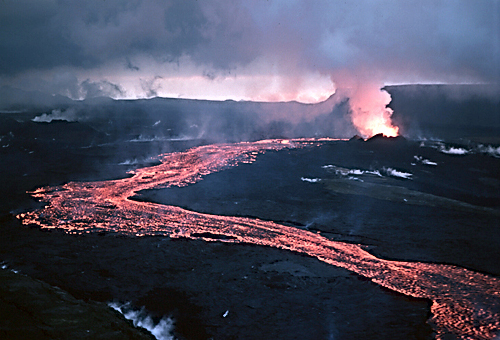1. Whoa. This is a meditation on some heavy matters. The theme here is simply put: death and the afterlife. Death takes center stage and runs away with the play, so to speak. But not in a bad way. Every major character ruminates on or experiences death: suicidal tendencies, haunting experiences with the deaths of others, casual deadly sports, and war. The plethora of death and deaths provides a wide angle view on the subject in the Culture universe, allowing Banks to delve deeply into the topic. He comes to no real conclusions though: rather showing positives and negatives to all the experiences involved. Suicide, for example, is the last wish of a soldier whose spouse tragically died and he cannot move past it at all. He is jealous of her death, so he seeks his own through many philosophical ruminations. On the other side of things, two people who enjoy lava rafting accidentally capsize their canoe. Both die, but one has backed up their mind-state, essentially their soul, and is reborn. The other has not, choosing instead to live life once, believing that the experiences will be more poignant for it. These two examples show two extremes of the spectrum contained within, and the book delves into other examples: the horrors of mass-death in war, the horrors of single death in war, the deaths of AIs, et cetera. And this is really a theme, in the sense that he’s exploring death, not really making an argument with it or coming to a conclusion.
'I'm sorry, Custodian. You must get bored hearing me say the same things, day after day.'
'You never say quite the same thing, Tibilo.' The old monk gave a small smile. 'Because there is change.'
Quilan smiled too, though more as a polite response. 'What does not change, Custodian, is that the only thing I really wish for with any sincerity or passion now is death.'
'It is hard to believe, feeling as you do at the moment, that there will come a time when life seems good and worthwhile, but it will come.'
'No, Custodian. I don't think it will. Because I wouldn't want to be the person who had felt as I do now and then walked - or drifted - away from that feeling until things felt better. That is precisely my problem. I prefer the idea of death to what I feel just now, but I would prefer to feel the way I do now for ever than to feel better, because feeling better would mean that I am not the one who loved her any more, and I could not bear that.' He looked at the old monk with tears in his eyes.
2. The writing is as good as Banks has achieved. He’s still using that wonderful formal-colloquialism—the close use of formal sentences and word choices with colloquial ones, having few half-measures in between. It’s such an engaging, interesting voice, and it really helps the reader enjoy the whole novel. Throughout, his voice and sentence structures really shine.
3. The plot here proceeds linearly for most of the novel, but there are a couple of places where it steps out: the researcher, the e-dust assassin, and the backstories of Major Quilan and Masaq’ Hub. The thing that is strange about what Banks does here is that he jumps both forwards and backwards, rather than just having backstory. For instance, some of the story involving the researcher occurs much, much farther in the future than the scene that comes right after it in the novel. Also, the E-Dust Assassin shows up much earlier in the novel than when it enacts its assassinations. At the same time, Hub and Quilan’s frequent backflashes push the narrative backwards in time. So the plot jumps both forwards and backwards, which is kind of unique, I think. And it works for him. He leaves enough details out that the assassin isn’t disorienting, just puzzling and interesting. Though one does have to trust Banks to resolve it, and he does.
4. Denying detail initially is a tactic that Banks often adopts, which I am into because it works and it’s a massive middle finger to the intro-info-dump that I hate. Banks will start a chapter, not giving any names, but it’s typically only a few lines before the reader recognizes who and what is going on through descriptions or dialogue, then a few paragraphs before Banks reveals for sure who and what is going on. This tactic is a sort of puzzle for the reader at the start of new chapters or sections—a little mystery to figure out while the plot and book are moving. He doesn’t do this at the start of the first chapter—he reveals names and places initially, in order to place the reader. But he still denies the horrendous intro-info-dump.
5. One thing Banks is really getting better at here is characters. The characters are all distinct and engaging—despite being plays on tropes: the gentle giant, the curious simian, the celebrity dog, the benevolent leader who is benevolent because of shame for past deeds, the flighty girl, the gullible old man (drone) addicted to propriety, the almost-nihilistic philosopher who can’t let go of a past relationship cum tragedy, and the military leader bent on revenge. These eight are the main characters. To explain one example, the flighty girl is not flighty in the sense the phrase implies: rather, she is into flying with a set of artificial wings—gliding more than flying—or a hot air balloon; this shows how he plays up these tropes, which is engaging and funny in a way the novel needs to offset the potentially depressing theme. However, these characters are actually engaging for themselves: the gentle giant is gentle, sure, and a lot of his actions are, but he’s also a journalist attempting to understand people and their experiences. He goes lava rafting as a sort of social experiment and in an attempt to understand the allure of it—that’s interesting and unusual. So he uses the tropes in inventive ways, but also goes beyond them to contemplate and show extensions of the tropes. Essentially questioning what that trope of person really would be like. In other words, if stereotypes are loosely based in reality, he is getting towards the reality of these tropes.
6. I don’t buy the criticism that the Hub’s actions at the end are a deus ex machina. I think the Hub noticing the displaced objects makes sense in the context—his job is to see everything on the orbital and in the hub and avoid disasters, so of course he notices what is displaced there. But I also am not wholly satisfied with the ending. It does a fantastic job of closing the plot because Banks strikes a balance between what is implied by the story and what I want by the end. I am rooting for Quilan to go on living and find his release, for avoidance of the potential mass murder, for Hub forgiving itself, and for the researcher saving the day. The story implies mass murder and stark despair. It’s a wonderful, brilliant balance Banks strikes in the mass murder being averted, while two characters die. But Banks never resolves the theme. If the resolve is simply that death is natural and inevitable and good in its way, that hasn't been terribly insightful since Solomon. Perhaps by having the plethora of death in the novel he denies himself being able to say one conclusion because he says so many conclusions. And that’s what didn’t satisfy me about the ending: the theme wasn't resolved. Though perhaps the amount of story after the two characters die is a bit long, it simply ties up other loose ends.
7. In all, it’s a good novel. I enjoyed Look to Windward. It’s written really well and the storytelling is good. But the unresolved theme certainly niggles at the end. His characters are so strong, but it’s not the best Culture novel I’ve read. Nor is it the worst. The quality between the first Culture novel, Consider Phlebas, and this one staggers me. He has consistently improved and gotten better as a writer and storyteller. I’m looking forward to the next one.







No comments:
Post a Comment